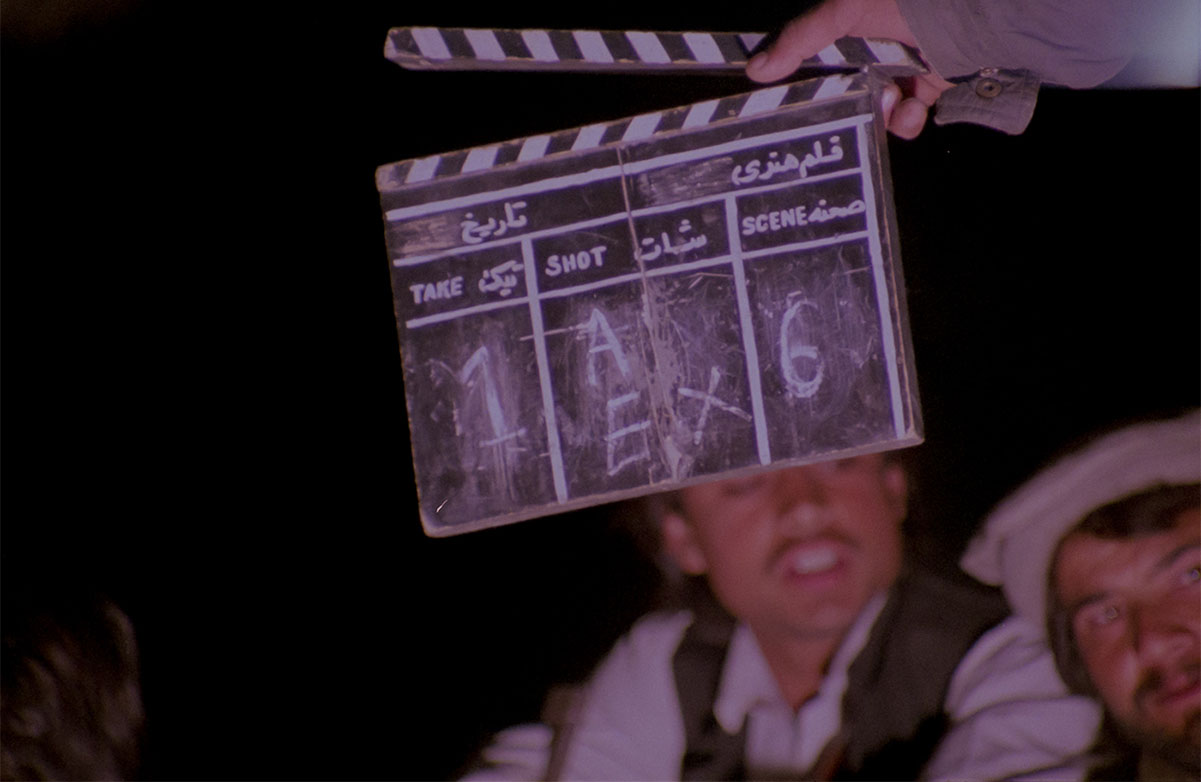By Dennis Hartley
(Originally posted on Digby’s Hullabaloo on August 7, 2021)

Considering recent developments in Afghanistan, the release of Mariam Ghani’s documentary What We Left Unfinished may prove to be timelier than the director intended. Her film offers a behind-the-scenes look at the Kabul-based Afghan film industry, and how it fared during the multi-regime Communist era (from 1978 to 1991).
While it may seem counter-intuitive to consider a 13 year-long period of Communist rule as “the good old days”, the filmmakers who are profiled here view it as a golden age (of sorts)…especially relative to the subsequent years of Taliban rule from 1992 to 2001.
If there was an “up” side to the implementation of the Soviet model during that period, it was state funding of movies. Of course there was a substantial “down” side for filmmakers, in that they did not get final cut…every master print was subject to approval (read: butchering) by government censors before distribution. Those willing to put up with caveats found they had an otherwise surprising amount of resources at their disposal.
Ghani uses restored footage from five unfinished projects to give a sampling of the types of films that were produced during that period. For the most part, they are standard melodramas; and while they contain elements reflecting Afghanistan’s historical turbulence and nods to Communist doctrine, none of them struck me as overtly political.
Ghani enlists writers, actors, producers and directors to reflect on how they finagled to keep the film industry alive during this period, despite the frequent regime changes (sometimes governmental shifts would occur mid-production, which could get awkward).
Some of the filmmakers’ stories are pretty wild. One recalls staging a battle scene in the desert wherein they had to use real bullets (the army provided them with weapons for the film, but didn’t have any blanks). When he called “cut”, he heard additional gunfire and quickly realized that actors and crew were being shot at by a small band of mujahedin, who had been drawn by the sound of their gunfire. They were eventually able to escape.
If you’re looking for the big picture-at 70 minutes Ghani’s film cannot convey the full complexity of Afghan art and politics; but as film preservation it has historical value. It’s not for all tastes, but I think diehard fans of international cinema should find it intriguing.
WHAT WE LEFT UNFINISHED is in select theaters and virtual cinemas nationwide.

I love it. Suicides, assassinations, mad bombers, Mafia hitmen, automobile smash-ups: “The Death Hour”. A great Sunday night show for the whole family.
-from Network, screenplay by Paddy Chayefsky
Talk about helicopter parenting. Matt Yoda’s documentary Whirlybird is one of those “only in L.A.” stories; specifically the story of the Tur family…broadcast reporter Zoe (formerly Bob), her ex-wife/long-time professional colleague Marika Gerrard, and their two children James and Katy.
It’s tough to pigeonhole a film that runs the gamut from shocking footage of the 1992 L.A. riots and the infamous O.J. Simpson Bronco chase to home movies of a happy mom-to-be carrying future NBC News correspondent Katy Tur. The best I can do for you is “Keeping up with the Kardashians meets Broadcast News.”
Although the “action news” format was established in the 70s, one can credit (or blame) news stringer/helicopter pilot Bob Tur (who transitioned to Zoe in 2014) and then-wife and camera operator Marika Gerrard with popularizing the sensationalist, God’s-eye iteration of “breaking news”…reporting from high aloft the murder and mayhem below.
Tur founded the independent Los Angeles News Service in the 80s, initially running his own camera in addition to doing the reporting. As Marika recalls, it wasn’t too long after she and Tur began courting that he encouraged her to learn how to shoot news footage. More often than not, “date nights” ended up with her tagging along with him to a crime scene, fire, or a car crash anyway, so Marika figured out early on that if she wanted time with Bob, her best bet was to take him up on his offer to be a professional partner as well.
Even once the couple began to build their family, the police scanner remained the soundtrack of their lives. Zoe recalls “driving 110 miles an hour” to get the jump on a breaking story…with her wife and kids in the car.
If that sounds like reckless behavior, Zoe would agree with you. While sheepish about speaking of herself in the third person, she now realizes “Bob” had an overabundance of testosterone. Bob also had anger management issues, as evidenced in outtakes of him berating both Marika and helicopter pilot Lawrence Welk III (I was reminded of the 2010 documentary Winnebago Man).
Nonetheless, the reportage that Tur and Gerrard did over the years adds up to an extraordinary documentation of key historical events in Los Angeles from the late 1980s through the late 1990s “as they happened” (e.g. that is Bob Tur’s voice you hear accompanying that horrific, now-iconic footage of truck driver Reginald Denny being beaten nearly to his death on live television).
The director was given access to the couple’s archive of several thousand Beta tapes. As he plowed through the library, Yoda noticed that there was quite a bit of family footage mixed in among the plane crashes, riots, and police pursuits (Bob and Marika used the work camera for their home movies).
The couple’s marriage ended in 2003; Yoda interweaves family footage with career highlights to create a dual chronology of a city descending into chaos and a relationship becoming increasingly untenable. It’s not necessarily “a great Sunday night show for the whole family”…but it’s an absorbing watch and one of the top docs I have seen this year.
WHIRLYBIRD is streaming on Amazon Prime, Google Play, and other platforms.










